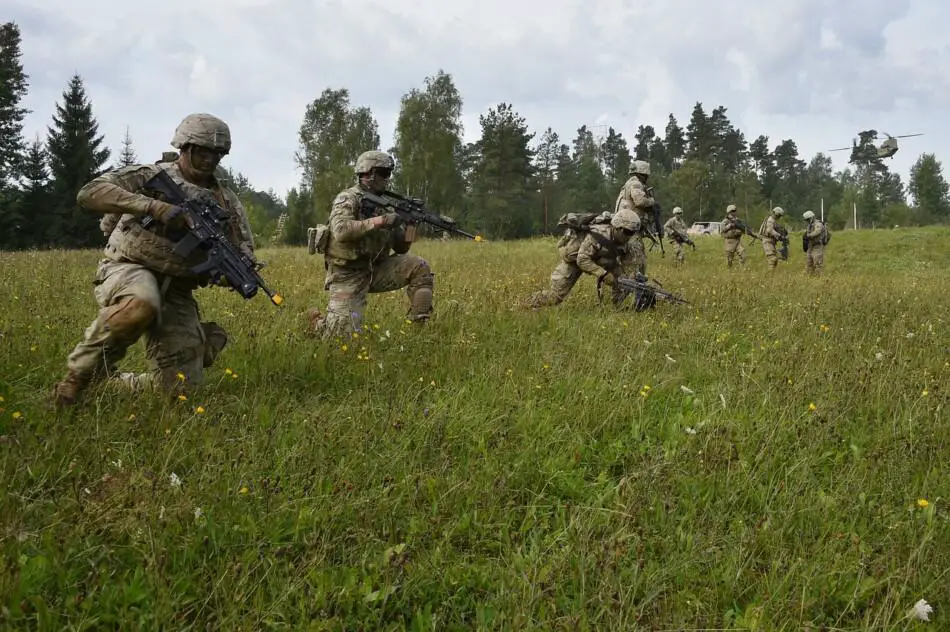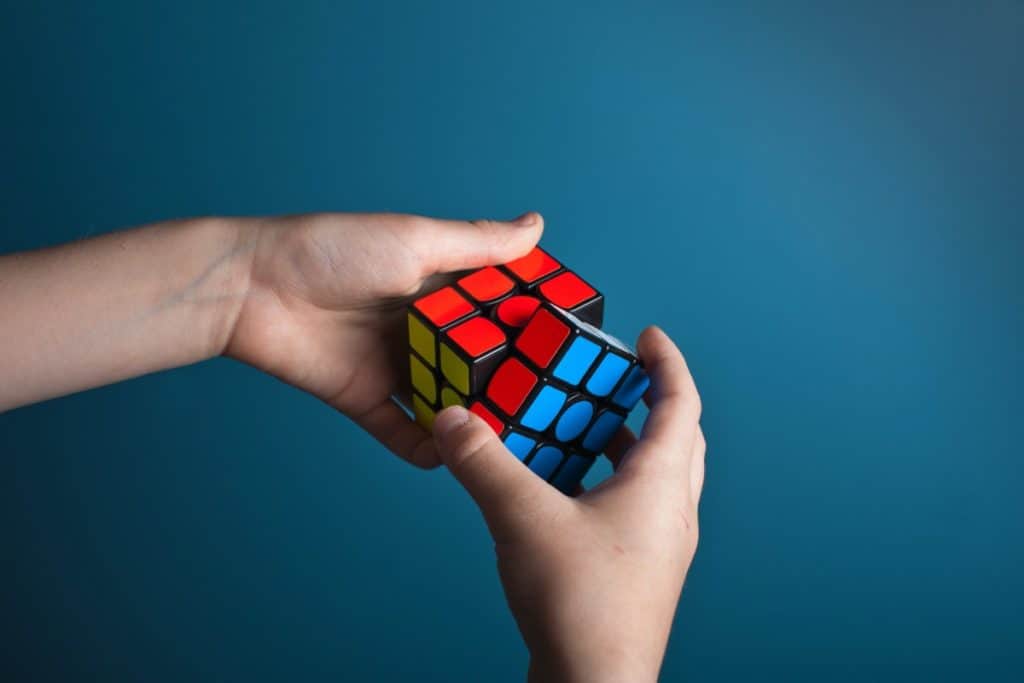Eidetic memory has erroneously been used to refer to photographic memory. However, the two are not synonymous.
Furthermore, photographic memory may be a myth, as it lacks scientific data to support its existence.
However, eidetic memory is a visual recall primarily associated with children.
Eidetic memory is a type of visual memory that is usually short-term. You strengthen it by improving your overall memory with a better diet, physical exercise, and memory exercises that teach your mind to focus. Strategies have included the method of loci, pegword method, and military method.
We can’t change our brains to become instant recall video databases. So even those who claim to have photographic memory use the term imprecisely.
Nor is having a realistic eidetic memory standard, even amongst children. But we can teach ourselves to have better memories.
What Is Eidetic Memory?
Eidetic memory is a type of short-term visual memory. It is routinely confused with a photographic memory, which lacks scientific proof.
Eidetic memory has mostly been found in young children.
Samples of kids between six and twelve years old have found that 2-10% have eidetic imagery.
However, children seem to lose their eidetic imagery abilities by the time they are adults. There is evidence to suggest this occurs as their language skills develop.
Long-term visual memories are believed to be emotional memories. While these memories are authentic to the person that possess the images, their accuracy is faulty, with details added, omitted, or altered.
Adults are not thought to have an eidetic memory. Regardless if there are exceptions, it is not considered a skill that can be taught.
But adults can possess a phenomenal memory, and memory can be improved.
Training ourselves to have improved memories involves taking care of our physical health and mental exercises.
-> Read Also What Is An Autodidact?
Improving Memory Through Exercise And Diet

A healthy brain works better than one that isn’t being taken care of through exercise and quality nutrition.
Thus, all memory, even the kind inaccurately associated with eidetic and photographic, will improve by taking better care of the self.
Improving Memory With Regular, Moderate Exercise And Sleep
Regular, moderate exercise benefits our brains and, consequently, our memories. A 2021 review examined studies on older adults who did not have dementia or other mental disorders.
The study stated, “Physical exercise can result in structural brain changes, such as increased hippocampal volume and gray matter volume.”
It concluded that 45-60 minutes of moderate exercise 3-4 times a week would improve working memory.
However, the exercise regime needs to be regular for a minimum of twelve weeks, and optimal results were found in those that stuck with it for six months.
Harvard Health points out that exercise reduces insulin resistance and inflammation, which can negatively impact our brain’s health.
However, it also stimulates chemicals in the brain needed to promote new blood vessels and keep new brain cells alive.
They also believe exercise helps our cognitive skills because it boosts our mood, improves sleep, and reduces stress and anxiety.
The qualities, including better sleep and less stress, can even be achieved with milder activities, such as gardening.
But sleep is most crucial to our cognitive function. As the Perelman School of Medicine noted, “Sleep improves memory retention and recall by between 20 and 40 percent.”
Improving Memory With Diet
Diets high in vegetables, whole grains, and lean protein can help keep a brain healthy and, consequently, help us retain memories.
A 2017 study also showed that omega-3 fatty acids, such as those found in oily fish, promote blood flow to the brain.
However, evidence suggests that for omega-3 fatty acids to benefit our brains, we need to obtain them from our diets, not a supplement.
Excellent sources for omega-3 fatty acids include:
- Oily fish, such as mackerel
- Flaxseed
- Chia seeds
- Walnuts
- Soybeans
Lastly, fruits, such as berries, also help prevent neurodegenerative diseases.
Teaching Yourself To Have A Better Memory

There are many exercises and strategies to keep brains functioning and healthy. General advice routinely offers the following suggestions:
- Reading
- Learning a new language
- Learning to play a new instrument
- Learning a new skill or hobby
- Crossword puzzles
- Jigsaw puzzles
- Sudoku
- Chess
However, there are strategies that people use to improve the brain’s focus and recall, including boosting memorization skills.
It also lengthens the amount of time we accurately retain information before details are added, omitted, or altered.
These skills are often associated with an eidetic and photographic memory. Thus, while we can’t obtain a real eidetic memory, we can teach ourselves the next best thing.
-> Learn More about Self-Learning vs. Classroom Learning: Which Is Better?
The Loci Method: A Mnemonic System
Mnemonic systems use patterns or systems to help retain information. These systems exercise the brain while also boosting our memories.
The loci method “LOW sigh” is a strategy that has been used as far back as the Roman Empire. It has also gone by the name “memory palace,” which uses the loci as the base for its strategy.
The clue to this method resides in the name “loci,” plural of “locus,” which means “location.”
A 2017 study showed that the loci method remains an effective learning method.
Compared to the control, there were positive results for the “memory athletes” involved in the study in free recall, 20-min delayed recall, 24-hour delayed recall, and a 4-month follow-up.
In addition, those that used the loci method showed “changes in brain network organization.”
The loci method is a visualization strategy whereby you create a mental room or familiar spot (like your yard) and set yourself in it.
Then you “place” objects you need to remember and actively interact with them as you walk through the space.
For example, imagine your cat needs a collar, food, and a water bowl.
First, you visualize yourself in a location, such as your kitchen.
Next, you place the items around the room:
- The collar on the counter
- Food next to kitty’s food bowl
- Water bowl in the base of the sink
Now take yourself around the room and interact with the objects. For example:
- Pick up the collar and put it on your cat
- Now feed your cat by pouring food into her bowl
- Lastly, go to the sink and fill up the new water bowl
By doing this mental exercise, you should be able to focus on what you require when at the pet shop without looking at a list.
Instead, you simply imagine yourself in the kitchen and going through the items one by one in the room, putting on the collar, feeding the cat, and giving her a fresh bowl of water.
The Pegword Method: A Mnemonic System
The pegword method is another mnemonic system that relies on correlation. The idea is to create mental pegs (hooks) that you can hang onto when needing to remember lists or numbers.
The most common “pegs” are the alphabet and numbers 1-10.
To begin, you need to have your pegs established. These should be consistent, so you can reach for them every time.
Thus, a peg alphabet could begin as:
A = Ant
B = Bear
C = Capybara
D = Dog
E = Elephant
F = Frog
G = Goat
H = Hippo
I = Iguana
J = Jackrabbit
K = Kangaroo
L = Lion
M = Monkey
N = Newt
O = Octopus
P = Penguin
Q = Quail
R = Road Runner
S = Sawfish
T = T-rex
U = Umbrellabird
V = Vulture
W = Wombat
X = X-Ray Tetra
Z = Zebra
Also, the pegs should be as detailed as possible. For example, “A” is an “ant.” But it shouldn’t just be any old ant. Think of a specific image of an ant. Perhaps you are a big fan of Marvel’s Ant-Man.
Or maybe you can’t stop thinking of those ants in the tropical forest who have been turned into zombies by a fungus (yikes).
Now let’s say you need to go to the store to buy ingredients for scones. You need:
- Flour
- Salt
- Butter
- Milk
To use the peg method, you must associate these ingredients with their corresponding letter. For instance:
- Frog hops through the flour
- Swordfish saws through a block of salt
- Bear licks a stick of butter
- Monkey fingerpainting with milk
You can help this out by creating a scene. Imagine your kitchen in chaos.
- A frog is hopping through flour strewn across the floor
- On the counter is a swordfish sawing through a block of salt
- A bear stands where with your fridge open, licking a stick of butter
- A monkey is fingerpainting on the walls with milk
The better the mental picture you can create for yourself, the more likely you will remember it.
The peg number system works similarly. For example, let’s say you need to memorize the phone number: 555 – 1926.
First, you have your number pegs. These generally rhyme with the numbers, made easy thanks to many nursery rhymes. But you can make up whatever works best for you.
For example:
1 = Nun
2 = Brew
3 = Bee
4 = Boar
5 = Hive
6 = Chicks
7 = Heaven
8 = Crate
9 = Wine
10 = Zen
So you have:
- Hive Hive Hive Nun Wine Brew Chicks
So now you can use these images to create a mental picture or story:
- At the 3 Hive Pub, there was a nun drinking wine while listening to the Brew Chicks play

The Military Method
The military method is a strategy that comes with its own folklore. It is claimed that covert military would use the method to train their operatives.
Once they had completed the training, the operatives would have a photographic memory.
The folklore makes impossible claims since photographic memory’s existence is debated. Nor has any military claimed this method as part of their training, current or historically.
However, people have claimed success with it. To its credit, the setup creates a spy-like ambiance.
The military method also sounds more serious and makes people feel like they are training.
Whereas mnemonic methods can sometimes make people feel they’re back in pre-school.
The military method requires dedication and commitment to work, like any other exercise program promising results.
You need to set aside approximately 15 minutes daily, for at least a month. It is claimed even one missed day can set you back a week’s worth of progress.
To begin, you must find a space that will be completely dark when the light is off. A closet is a good option. If you don’t have access to a windowless room, you need to black them out.
The room should be dull, with as little in it as possible. All you need is a chair, a bright light you can switch on and off from where you are sitting, and a paragraph of text.
The easiest is simply printing out a paragraph of text on a blank paper. However, some people cut a paragraph size rectangle out of a plain piece of paper and place it over the book or document.
Now, sit in the chair, and hold the paragraph in front of you at reading distance. You can tape it to the wall in front of you, put it on an empty table or desk, or hold it. The other hand works the lamp switch.
To begin, you sit in the dark room and wait until your eyes are adjusted to the dark. Once you are ready, flip the light on for a second and then switch it off.
Now try to visualize that paragraph. Once your mind’s eye has lost the image, do it again: switch the light on and off.
The military method suggests that the average person can memorize a standard paragraph in a month using this method. It is also claimed that overall memory will be improved through this exercise.
Once the paragraph is memorized, you can stop the exercise or challenge yourself to a new mental challenge, such as memorizing a new paragraph.
Eidetic Memory, Intelligence, And Observation Skills

Eidetic memory, and its more famous cousin, photographic memory, are stereotyped as signs of high intelligence.
But even if photographic memory was scientifically proven and eidetic memory was something we could teach ourselves, it is only part of the conversation.
In Neil deGrasse Tyson’s speech, How to Use Your Mind, he illustrates the difference between having perfect recall of information versus being able to think critically and problem solve.
Tyson presents a scenario where two candidates are applying for a job. The candidates are asked how tall the spire is on the building they are sitting in.
- Candidate A was taught this info and memorized the answer perfectly: 155 feet
- Candidate B doesn’t know but comes up with a mathematical solution to provide a close estimate: 150 feet
Candidate A demonstrated the ability to perfectly recall information they had memorized.
Candidate B demonstrated the ability to problem solve when they don’t know an answer to a problem.
In Tyson’s example, having perfect recall isn’t the better skill. However, that doesn’t mean that having eidetic or photographic memory wouldn’t be helpful.
The Center for Brains Minds + Machines explains this in their post Memory as a Cornerstone of Intelligence.
The 2021 post explains that memorization allows us to progress faster in our cognitive processes. They use the example of mathematics.
Simple addition exercises take young people a long time because they have to count to reach the answer.
But as they begin memorizing simple arithmetic, they can work through more challenging equations. Since they already know certain knowledge, they can build upon it.
A similar argument can be made with observation skills. Observation skills have long been valued in scientific studies. However, they are also crucial to creativity.
By utilizing our senses to take in what is around us, we are feeding our ability to come up with new ideas, be it a new poem, a unique building technique, or a new cost-savings measure.
Eidetic or photographic memory is tested through the ability to recall details or an image or a scene.
For example, when shown a photo of a dog, many of us will recall the animal was a dog. We’ll probably also remember if it was big or small and if it was a dark color or light.
But unlike somebody with eidetic memory, we might not recall the color of its eyes and if all four paws were visible.
While we can’t teach ourselves to have perfect recall, we can learn to be more observant and, consequently, feed into our creativity.
-> Learn more about the 7 best websites for self-learning
An Exercise To Increase Our Observation Skills

A simple yet effective method to teach yourself to become more observant is practicing how to describe experiences, objects, and scenes. You can do this in two ways.
First, use a journal and write down an experience, an object, or a scene. For example, maybe you are sitting on a bench during lunch. Take a moment and observe. Then open your notebook and begin to write.
Add everything you can think of, from what you can see, how the air feels on your skin to how the bench feels underneath.
- Is there a smell in the air?
- Could you hear people talking?
- What were they saying?
- Were there birds chirping? If so, can you describe the tune?
- Are any insects buzzing?
The other method is strictly a mental exercise. For people who commute by public transport, you might find it an easy time to practice this method. First, focus on the scene, or an object, then close your eyes.
Now, try to mentally recall as much detail as possible, describing everything back to yourself, while keeping your eyes closed. Once you are finished and run out of details, open your eyes and consider how well your mental image compares.
The more you practice these two methods, the better you’ll become at noticing what is around your everyday existence.
It exercises your brain and makes you use all your available senses. In addition, it improves your memory.
Conclusion
While you can’t teach yourself to have an eidetic or photographic memory, you can improve your memory.
First, you need to take care of your physical health with good food and exercise.
Next, exercise your brain through puzzles and mnemonic methods.
In the end, you’ll retain information better and boost your memorization skills.
Resources
- https://www.skillshare.com/classes/The-Memory-Palace-Course/1073743954
- https://www.youtube.com/watch?v=l5-YrZhudPU
- https://www.youtube.com/watch?v=5ESBJLbRwJY
- https://www.youtube.com/watch?v=l4C1x22aHb0
Links
- https://www.healthline.com/health/mental-health/how-to-get-a-photographic-memory
- https://www.magneticmemorymethod.com/eidetic-memory/
- https://www.wikihow.com/Get-a-Photographic-Memory
- https://www.betterhelp.com/advice/memory/difference-between-eidetic-memory-and-photographic-memory/
- https://www.differencebetween.com/what-is-the-difference-between-eidetic-memory-and-photographic-memory/
- https://www.zmescience.com/science/what-is-eidetic-memory-the-poor-mans-photographic-memory/
- https://slate.com/technology/2006/04/no-one-has-a-photographic-memory.html






